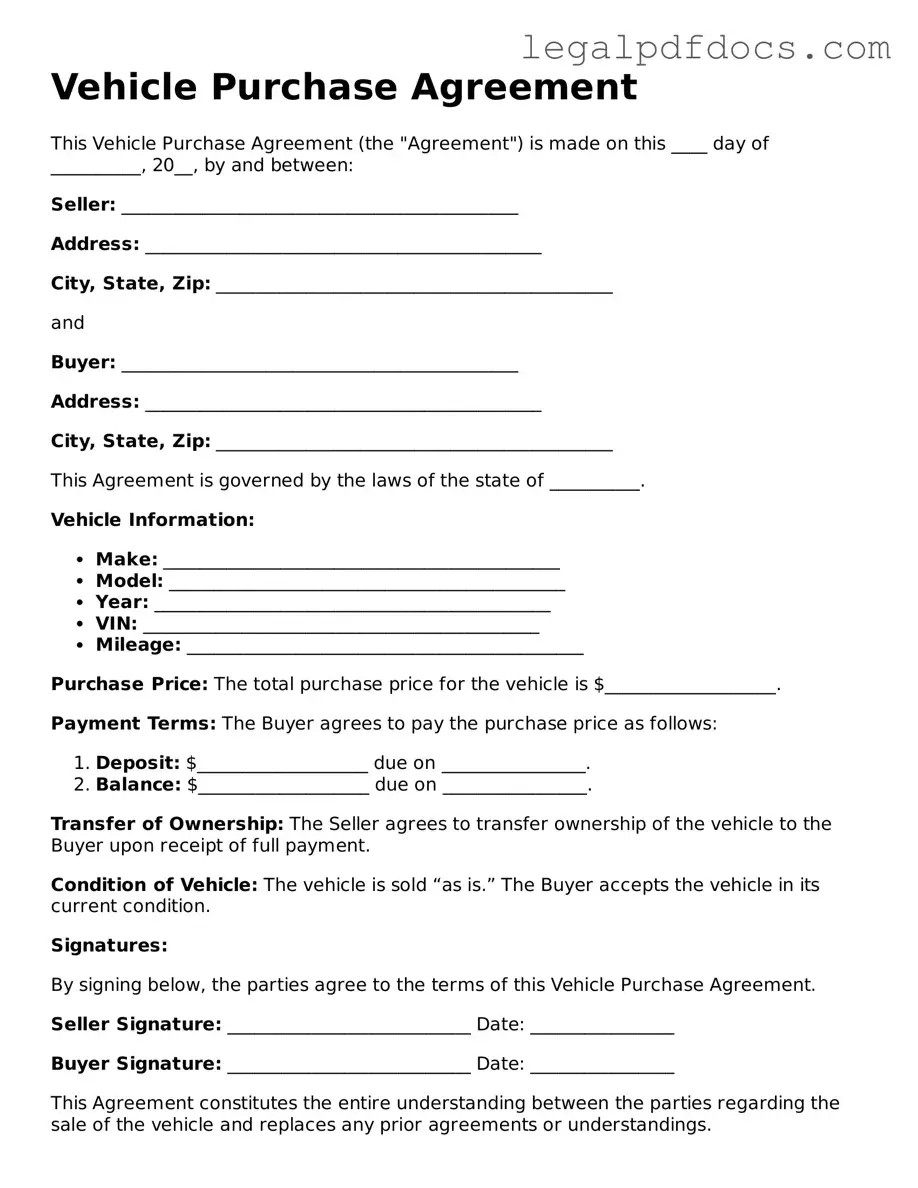The Vehicle Purchase Agreement form serves as a crucial document in the process of buying and selling vehicles, ensuring that both parties understand their rights and obligations. This agreement outlines key details such as the purchase price, vehicle identification number (VIN), and the condition of the vehicle at the time of sale. It also specifies the terms of payment, including any deposits or financing arrangements, which can help prevent misunderstandings later on. Additionally, the form may include warranties or disclaimers regarding the vehicle's condition, protecting the buyer from potential issues after the purchase. By clearly defining the responsibilities of both the seller and the buyer, the Vehicle Purchase Agreement fosters transparency and trust in the transaction. Furthermore, it can be a valuable tool for resolving disputes should they arise, as it serves as a written record of the agreed-upon terms. Overall, this form is essential for anyone looking to navigate the complexities of vehicle transactions with confidence and clarity.
